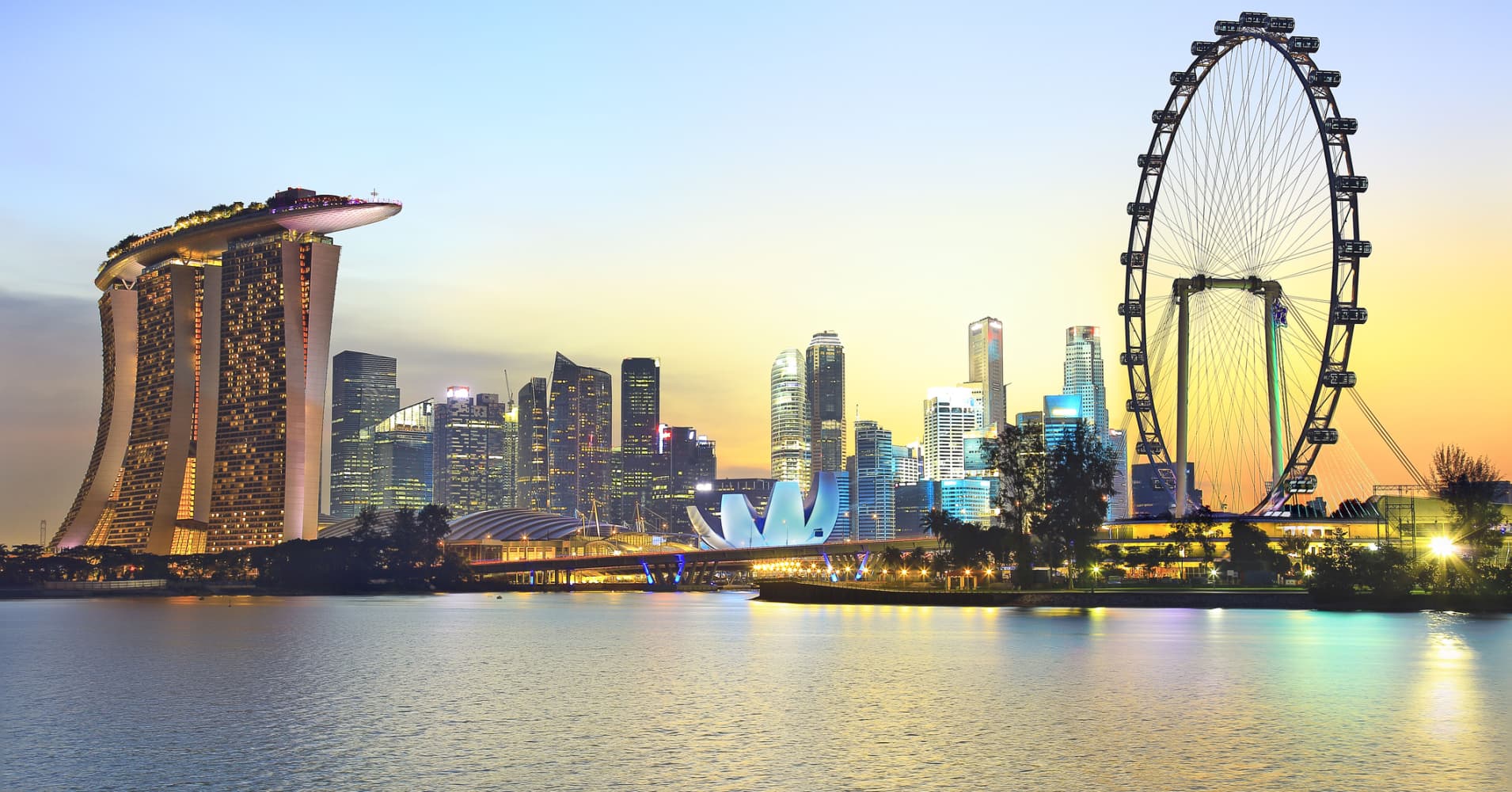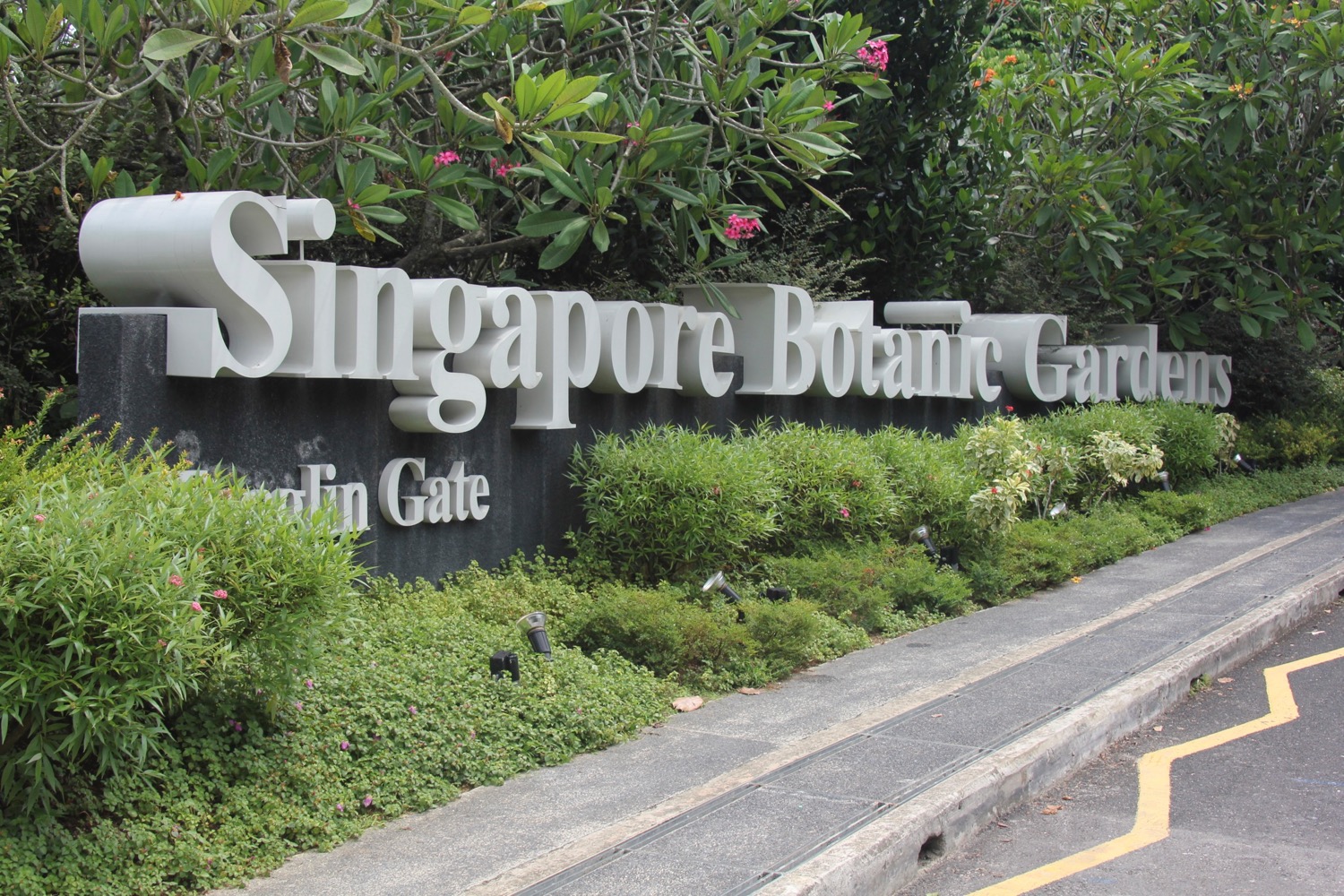Lion City. Garden City. The little red dot. All of them are different names for the same country: Singapore. Located at the southern tip of the Malay Peninsula, Singapore is a small island state in Southeast Asia. Singapore is one of the smallest countries in the world, spanning an area of only 722,5 km2, consisting of a main island and 62 smaller islands. The name Singapore comes from the words singa and pura, derived from Sanskrit, meaning lion and city respectively. Legend has it that Sang Nila Utama, the Sumatran prince credited with naming the island, saw a lion while roaming around the island, and thus gave it the name Singapura. The founding of modern Singapore dates back to 1819, when Stamford Raffles, a British statesman, reached the island and established it as a trading post for the British East India Company. Singapore then became a British colony, and remained so until World War ıı when the country was occupied by the Japanese. After the war, Singapore remained a colony of the United Kingdom until 1963, when it merged with Malaysia. Only two years later, Singapore broke free from Malaysia, and finally gained its independence in 1965.
Modern day Singapore is an ethnically diverse country. Singapore's population consists of Chinese, Malays, Indians and Eurasians who each practice their own distinctive customs and traditions, creating a society where everything from Chinese New Year to Hari Raya to Christmas is celebrated across the nation. This diversity is also evident in place names such as Chinatown, Arab Street, Holland Village and Little India, indicating the strong influence of different ethnic groups on the country's geography. Another very prominent feature of diversity is the country's food culture. Singapore is well-known for its cuisine, which includes famous dishes such as Hainanese chicken rice, commonly regarded as the national dish; chilli crab; laksa (rice noodles with prawns in a spicy gravy); chicken curry; bak kut teh (pork rib soup); satay (grilled meat on skewers served with peanut sauce); roti prata (Indian flatbread); and Hokkien mee (fried noodles). Food is a big part of life in Singapore, with a huge variety of different cuisines from all parts of the world represented in food courts, hawker centres, coffee shops and restaurants island-wide. The importance of food is also highlighted by the fact that the most common way of greeting people in Chinese is “吃饱了没有?”, meaning “Have you eaten?”. If you're eating at a food court or hawker centre during the lunch or dinner rush, be prepared to find the tables lined with tissues. This practice, known colloquially as “choping”, simply means reserving a table by placing an inexpensive item, such as a packet of tissues, on a table to indicate that it's occupied.
Apart from eating, shopping is another of Singaporeans' favourite pastimes. As Singapore is a hot and humid country, many people seek refuge in the air-conditioned shopping malls to escape the heat. The main shopping street, Orchard Road, popular with locals and tourists alike, is lined with everything from designer boutiques to huge bookstores and cinemas. If the heat gets a bit too much to handle, then stop for an ice cream! Get yourself a taste of the typical Singaporean ice cream sandwich – a slice of colourful bread filled with an ice cream flavour of your choice. If you're feeling adventurous, why not try some durian? Some people absolutely love it, while others find the taste of this exotic fruit unbearable. This spiky, green fruit has such a pungent smell that it's banned on public transport as well as in many housing estates.
If you instead would like to explore some of Singapore's many sights, a good place to start is Marina Bay, where the Merlion stands. The Merlion, a half-fish, half-lion creature spouting water into the bay, is a national symbol and official mascot of Singapore. If you are looking to have some fun, then head over to the island of Sentosa! Located south of the main island, Sentosa is an island designed entirely for entertainment purposes. Just a few minutes walk away from HarbourFront on the main island, Sentosa offers a variety of different activities such as the Mega Adventure Park with a zipline; Universal Studios; a butterfly park; Madame Tussauds; long, sandy beaches as well as a huge Merlion. If you're looking for a bit more fancy means of transportation, or just feeling lazy, it's also possible to reach the island by bus, monorail or even cable car! Other sights in Singapore include the Botanic Gardens with its famous Orchid Garden; the Esplanade, a theatre, performance and concert hall shaped like the shell of a durian; Gardens by the Bay, with its “supertrees” (tall tree-shaped structures lined with plants and climbers) and conservatories; the Singapore Flyer, the second highest ferris wheel in the world; and the Jurong Bird Park.
While walking around the streets of Singapore, you might have picked up a few words of the quirky language known as Singlish. Spoken by a majority of Singaporeans, regardless of background, Singlish is a unique local variety of English that mixes British English with words from several locally spoken languages and has its own grammatical structure. “Don't be so kaypoh lah!”, “Alamak, I forgot my keys!”, “You wanna go makan or not?”, “Wah lau, I really cannot tahan anymore!” “You siao or what?!” are just some examples of the colourful language known as Singlish.
- Singapore has four official languages: English, Mandarin Chinese, Malay and Tamil.
- Singapore's national day is 9th of August. This is celebrated with a huge National Day Parade with loads of different performances and musical acts every year.
- Chewing gum is banned in Singapore.
- Singapore is a fine city. Literally. There are fines for almost anything you can think of. Thinking of eating or drinking in the MRT (the island-wide subway/underground system)? Think again. Unless you want a fine of 500 Singaporean dollars (320€/370$), you better keep that food off the train.
- Owning a car is really expensive. The government discourages driving by putting a huge tariff on cars. Even though only 12% of Singaporeans own a car, the roads are almost always congested during rush hours, which makes the large network of public transport a much better option when travelling during busy hours.

...
 To react to the daily news you need to be logged in.
To react to the daily news you need to be logged in.



